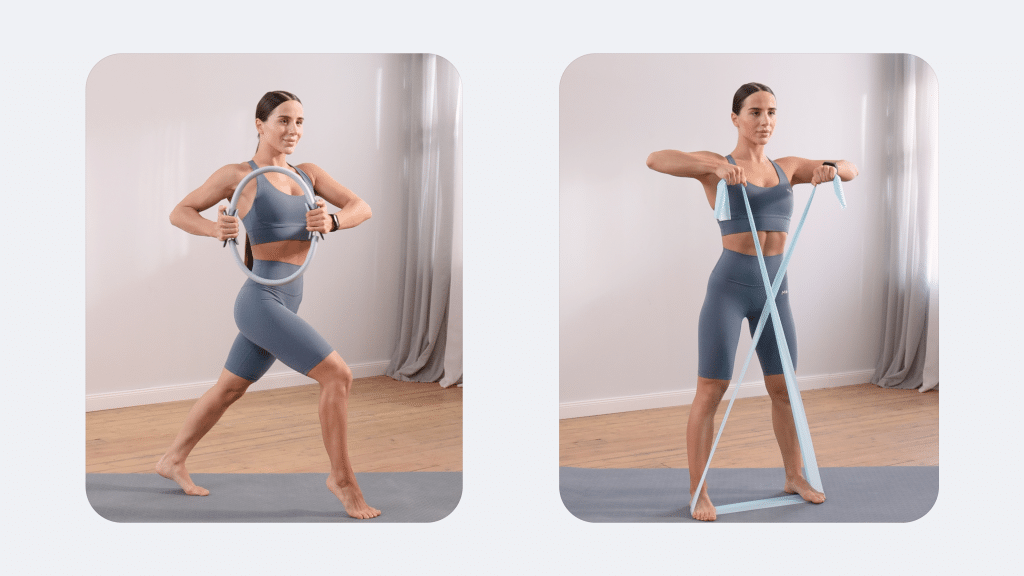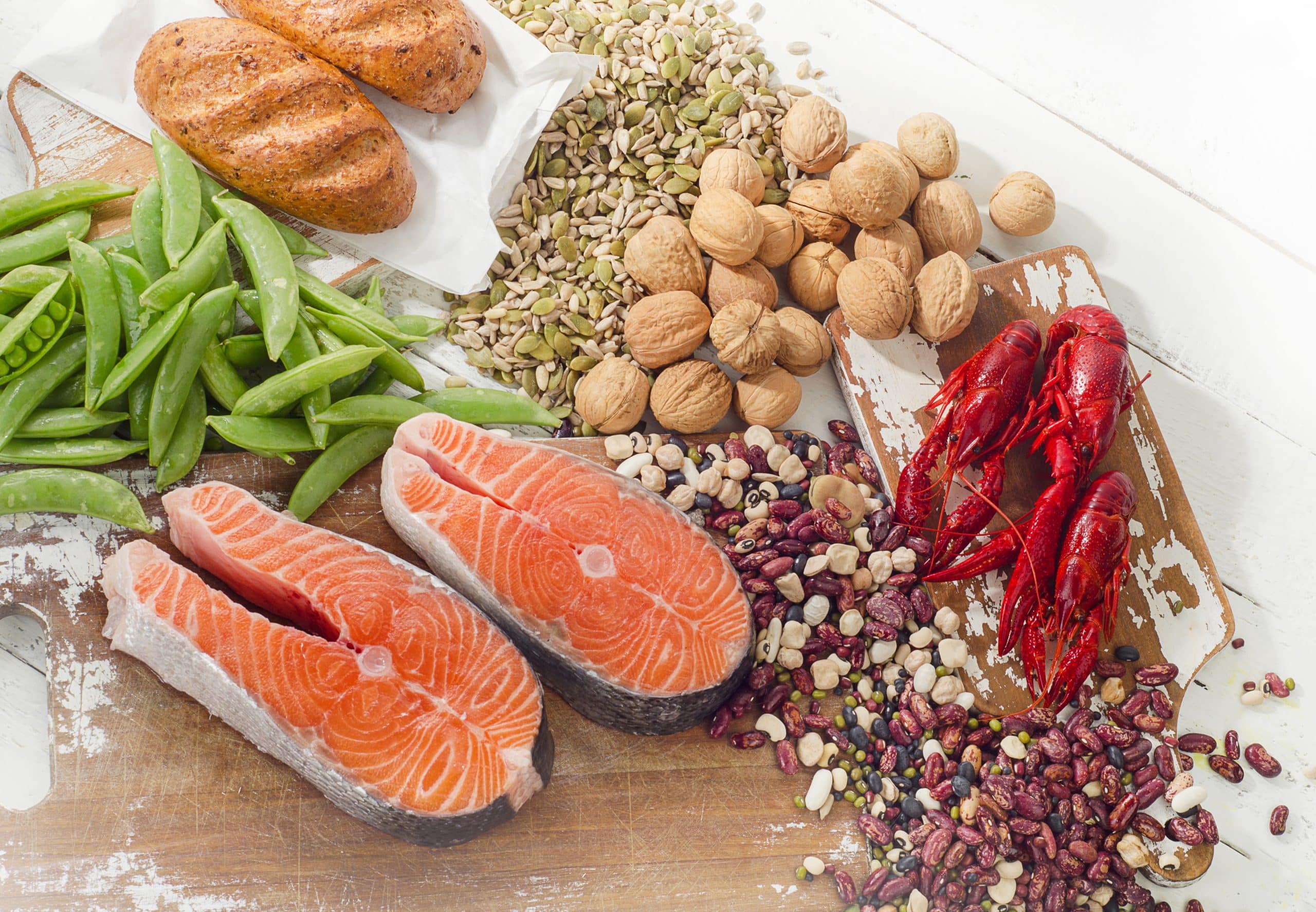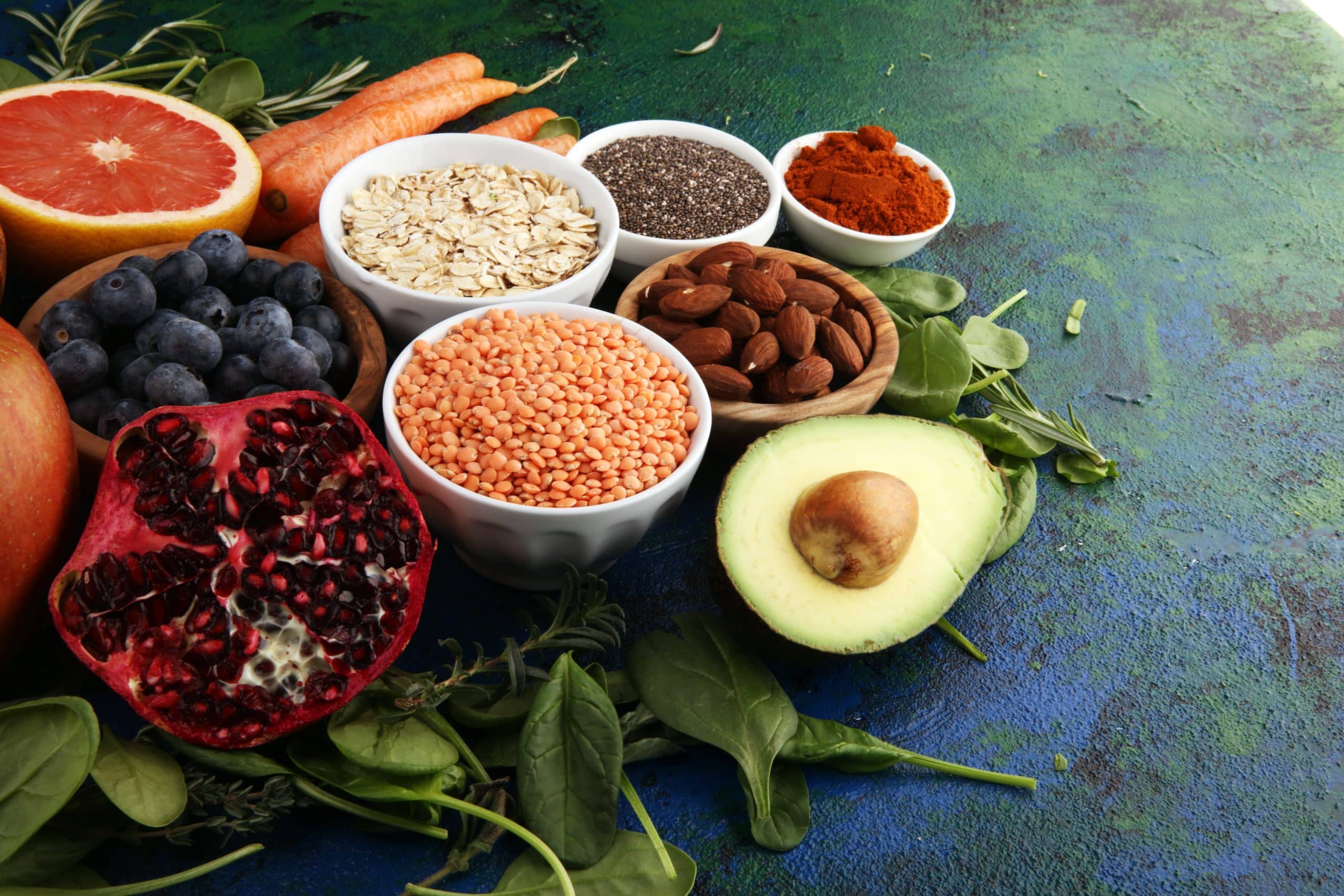Whenever we hear about metabolism, the term ‘calories’ often comes to mind. Generally, weight loss and gain are dependent on how many calories we consume and how many are burned by the body. Resting calories play a significant role when it comes to this.
Contrary to common belief, metabolism involves a series of activities that take place at the same time and is not a single mechanism. This also includes resting metabolic rate. We explore everything there is to know about resting calories and their significance in weight loss and gain.
What Are Resting Calories? (Also Known as Resting Metabolic Rate RMR)
Resting calories, also known as resting metabolic rate, refers to the number of calories the body needs to function while at rest. It’s the energy that’s burned while you’re sleeping, sitting, or lying down. Primary functions include breathing, blood circulation, food digestion, heartbeat, and neurological functions (15).
The human body needs the energy to perform functions such as blood circulation or breathing. Your body converts the food you eat into units of energy (calories) through a process that is referred to as body metabolism. The energy is used by the body immediately or stored for later use. The rate at which this process takes place is referred to as metabolic rate.
There are three numbers of calories in reference to metabolism: active, resting, and total calories.
Active calories are those the body burns during physical exercises such as walking, playing football, hiking, and cycling. Active calories are essential for losing weight.
Total calories are the sum of resting and active calories. The total number of calories you burn each day is your total daily energy expenditure (TDEE) (2).
Resting metabolic rate accounts for over 60% of total energy expenditure.
The term resting metabolic rate is often used interchangeably with basal metabolic rate. However, the two terms mean two slightly different things. Basal metabolic rate refers to the minimum number of calories you need to exist and perform essential functions(16). RMR is the number of calories your body actually burns when at rest, which includes low-effort activities such as eating and going to the bathroom. When you’re estimating your daily energy needs, the two are similar enough to be used interchangeably.

Betterme will keep you laser-focused on your weight loss journey! Nutrient-packed meal plans, fat-blasting workouts, galvanizing challenges and much more. Try using the app and see for yourself!
What Determines Resting Metabolic Rate?
For the majority of people, RMR can be estimated using known variables, including age, weight, sex, and height. These variables can be entered into an RMR calculator and used to calculate approximately how many calories your body needs daily to function.
What Affects Resting Metabolic Rate?
Every person’s resting metabolism is different and depends on several factors. The most significant factors that affect RMR include:
- Age. RMR decreases as age increases. A younger person needs more energy to function than an older person (11).
- Sex. Men tend to have higher resting metabolic rates than women as they are generally larger (8).
- Muscle. A more muscular individual requires more energy to maintain their body when at rest than a less muscular individual. Therefore, more muscle increases RMR (10).
- Genetics. Your resting metabolism may be partly affected by genes (9).
- Body size: Larger adults have more body mass and more metabolizing tissue, so they have a high RMR (5).
- Pregnancy. Pregnancy increases the resting metabolic rate. RMR increases throughout pregnancy from the 1st trimester to the 3rd (4). This is due to increased body mass and physiological changes such as increased cardiac output.
- Climate. Living in an area with cold weather can increase your RMR. This is because the body must work harder to supply the body with adequate heat to maintain the average body temperature (13).
- Dieting. Regularly restricting food intake can decrease your resting metabolic rate (7).
How to Calculate Resting Calories
Many online RMR calculators can be used to calculate your resting metabolism. They then multiply by an activity factor to account for your physical activity and tell you approximately how many total calories your body needs. You can also calculate resting calories in a lab, a gym, or by doing the math yourself. Remember that these calculators and tests estimate the resting calories burned daily and don’t provide an exact figure.
After calculating your resting metabolic rate, you might be curious to know if it falls within the normal range. The average RMR is estimated to be approximately 1,400 kcal per day for females and 1,600 kcal per day for males. If your RMR falls anywhere above or below these values, it is considered to be normal.
RMR Calculator
This is the simplest, most convenient way to calculate your resting calories. Search online for a Resting Metabolic Rate Calculator. Then input your age, sex, height, and weight. You need to know these before you use an online resting calories burned calculator. Some also ask how active you are physically in order to give a more accurate estimate of total energy needs.
Calculate RMR in a Laboratory
Some clinics and health clubs may conduct tests to provide you with your RMR. Such a test takes approximately an hour. It may involve exercise testing. Most protocols require you to wear a mask for a certain period (approximately 15 minutes) while resting. This mask is used to measure the exchange of gases to determine the number of resting calories burned.
If you do exercise testing, you’ll be required to wear a mask while on a treadmill. This is done to measure the number of calories your body burns while working.
Calculate RMR Yourself
If you’re a math lover, you could calculate RMR yourself. A formula called the Harris-Benedict Equation is used to estimate resting metabolic rate. You may see different versions of the equation out there, depending on if they are using the original or one of the revised versions.
Revised Harris-Benedict Equation:
Men: RMR = 88.362 + (13.397 x weight in kg) + (4.799 x height in cm) – (5.677 x age in years)
Women: RMR = 444.7.593 + (9.247 x weight in kg) + (3.098 x height in cm) – (4.330 x age in years)
For example, the RMR of a 25-year-old male who weighs 70 kg and is 170 cm tall needs approximately 1,700 Kcal per day at rest.
Read more: Kimchi: Calories, Nutrition, and Health Benefits
How Do Resting Calories Affect Your Workout?
Exercising regularly increases the number of calories burned. It also increases your resting energy expenditure – the rate at which your body burns energy once the workout is complete and you’re resting. Your resting metabolic rate may remain elevated if you exercise at least 3 times a week. In the long term, RMR is increased due to an increase in lean body muscle.
Moderate-intensity cardiovascular activities such as jogging, running, cycling, or hiking may help increase your metabolic rate by increasing oxygen consumption and metabolic efficiency. Strength training helps build muscle mass over time, which takes more energy to maintain.
Our Weight Loss Smoothies blog lists healthy smoothies that can be used when refueling without affecting your progress.
If you want to increase your metabolic rate, do a combination of moderate to high-intensity cardio as well as strength training exercises. These can include rope jumping, weight lifting, plyometric exercises, and hill walking.

Do Resting Calories Count Toward Weight Loss?
Weight gain results from the consumption of extra calories (more calories than the body requires). The average female requires 2,200 kcal while the average male requires 2,700 kcal daily to function properly and maintain their weight. Any extra calories are stored as fat and may eventually cause weight gain.
If one individual reduces calorie intake and another increases physical exercise and doesn’t cut back on calories, the first individual will probably find it easier to lose weight. This is because it is more difficult to burn an extra 500 calories than to cut 500 calories from your meals in a day.
However, if you only cut back on calories, it’s more likely that you’ll regain the weight lost. Why is this? The human body reacts to weight loss as if it is starvation, and as a consequence, body metabolism decreases. Even when you’re resting, your body burns fewer calories.
When the body burns fewer calories, you either lose weight at a slower rate or don’t lose weight at all. When you increase your calorie consumption, you may gain weight more quickly than you previously did. The solution is to strike a balance between modest calorie restriction and increase your physical activity to maintain your metabolic rate as much as possible.
Regular exercise increases the number of calories burned and the energy expenditure during rest. Regular exercises also temporarily increase your appetite (14). People often joke about wanting a snack after exercise.
Our Best Workouts To Lose Weight At Home article explains how weight loss can be achieved from the comfort of your house.
As exercising regularly raises your resting metabolic rate (12), people continue burning energy at higher rates. Therefore, a snack after a workout doesn’t erase the effort of exercising regularly in helping people keep their weight in check.
To lose more weight, try eating slightly less than your total calorie needs. You can also increase your level of physical activity to create an energy deficit. Some experts call this a calorie deficit. When you take in fewer calories than your body needs, it burns up stored fat as fuel. The result is that you lose weight. However, restricting calories too much can backfire, so you should aim for a 500-calorie daily deficit (or difference between what you burn and what you take in through eating).
Our blog on How Many Calories Should I Burn A Day? sheds more light on how to safely reduce your calorie intake.
BetterMe app will kick you out of the mental funk, shake off your extra weight, rid you off your energy-zapping habits, and help you sculpt the body of your dreams. Intrigued? Hurry up and change your life for the better!
FAQs
What are good resting calories?
There isn’t a specific number of resting calories that is considered “good”, simply because the number varies for every individual based on their age, sex, weight, height, and level of physical activity. However, resting calories are an essential part of maintaining a healthy body and lifestyle (6).
Resting calories, also known as basal metabolic rate (BMR) or resting metabolic rate (RMR), refer to the minimum amount of energy your body requires to function while it is at rest. This includes vital bodily functions such as breathing, circulating blood, and maintaining a constant body temperature (16). These processes require energy from the food we consume, even when we’re resting and not actively moving.
Knowing your resting calories can be beneficial when it comes to managing your weight. Multiply your BMR or RMR by an activity factor to determine your total daily energy expenditure (TDEE). If you consistently consume more calories than your body requires, the excess energy will be stored as fat. At the same time, if you consume fewer calories than your body needs, it will start using stored fat for energy. This can lead to weight loss.
Are resting calories the same every day?
Resting calories may vary slightly from day to day, depending on factors such as your level of physical activity and the food you consume. However, for the majority of individuals, resting calories tend to stay relatively consistent from day to day.
Our bodies are constantly changing and adapting. This means that our resting calories can also change over time due to various factors such as aging, changes in body composition, and hormonal fluctuations. It’s essential to occasionally reassess your resting calories to ensure you’re consuming the right amount of energy for your body.
Do heavier people burn more resting calories?
Heavier individuals tend to have a higher metabolic rate, which means they burn more resting calories than lighter individuals. This is because it requires more energy for the body to maintain and move a larger mass (5).
However, this doesn’t mean that being heavier is necessarily beneficial in terms of burning more resting calories. Excess weight can also contribute to health issues such as obesity, which can put strain on the body and increase the risk of chronic diseases.
Do you burn fat while sleeping?
You use up a certain amount of calories while you’re sleeping. This contributes to your total daily energy expenditure (TDEE). If your TDEE is more calories than you take in, you’ll likely turn to your fat stores to make up the energy deficit.
That being said, getting enough sleep can indirectly affect weight loss and the burning of fat (1). A lack of sleep has been linked to an increase in appetite and cravings for high-calorie foods, which contributes to potential weight gain. In addition, adequate sleep is essential for hormone regulation, including those that control hunger and fullness.
The Bottom Line
Learning about your resting metabolic rate and total daily energy expenditure can help you better plan your weight loss regime. The best way to lose weight is by combining dieting and exercise. However, you should remember to consult your healthcare provider. Remember that you don’t need to spend a lot of money on weight loss. All you need to do is set small achievable goals. In the long term, you’ll be able to lose weight and achieve your weight goals.
DISCLAIMER:
This article is intended for general informational purposes only and does not serve to address individual circumstances. It is not a substitute for professional advice or help and should not be relied on for making any kind of decision-making. Any action taken as a direct or indirect result of the information in this article is entirely at your own risk and is your sole responsibility.
BetterMe, its content staff, and its medical advisors accept no responsibility for inaccuracies, errors, misstatements, inconsistencies, or omissions and specifically disclaim any liability, loss or risk, personal, professional or otherwise, which may be incurred as a consequence, directly or indirectly, of the use and/or application of any content.
You should always seek the advice of your physician or other qualified health provider with any questions you may have regarding a medical condition or your specific situation. Never disregard professional medical advice or delay seeking it because of BetterMe content. If you suspect or think you may have a medical emergency, call your doctor.
SOURCES:
- Adequate sleep to improve the treatment of obesity (2012,nih.gov)
- Daily Energy Expenditure through the Human Life Course (2022,nih.gov)
- Effect of Calorie Restriction on Resting Metabolic Rate and Spontaneous Physical Activity** (2007, researchgate.net)
- Energy Intake Requirements in Pregnancy (2019, ncbi.nlm.nih)
- Effects of metabolic level on the body size scaling of metabolic rate in birds and mammals (2008,nih.gov)
- Exercise and weight loss: the importance of resting energy expenditure (2015,nih.gov)
- Examining Variations of Resting Metabolic Rate of Adults: A Public Health Perspective (2015, ncbi.nlm.nih.gov)
- Gender Differences in Metabolism (2020,clemson.edu)
- Genetics of human metabolism: an update (2015,nih.gov)
- Increasing muscle mass to improve metabolism (2013,nih.gov)
- Metabolic changes in aging humans: current evidence and therapeutic strategies (2022,nih.gov)
- Metabolic Effects of Exercise (2016.nih.gov)
- Metabolic rate and climate change across latitudes: evidence of mass-dependent responses in aquatic amphipods (2022,nih.gov)
- Physical Exercise and Appetite Regulation: New Insights (2023,nih.gov)
- Resting Metabolic Rate of Individuals (2023,nih.gov)
- What to know about basal metabolic rate (2020,medicalnewstoday.com)












